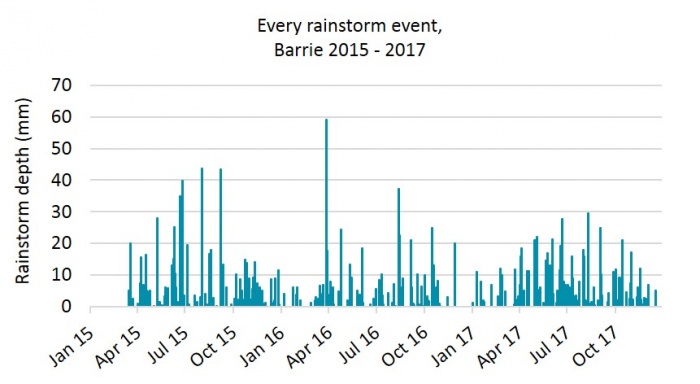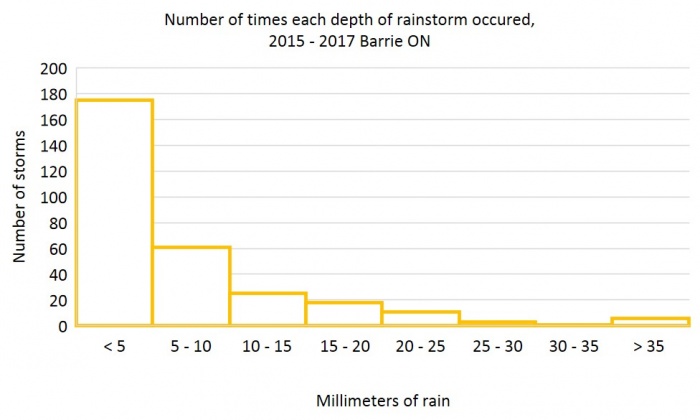Difference between revisions of "Understanding rainfall statistics"
Jenny Hill (talk | contribs) |
Jenny Hill (talk | contribs) |
||
| Line 15: | Line 15: | ||
[[File:Picture1.jpg|border|700 px]] | [[File:Picture1.jpg|border|700 px]] | ||
These same data can be fitted to a single equation which would then allow predictions to be made. In this example an exponential distribution function has been selected and an [https://www.wessa.net/rwasp_fitdistrexp.wasp online tool] used to find the fitting parameter 'λ'.: | |||
<math>f\left(x,\lambda\right)=\lambda e^{-\lambda x}</math> | |||
Revision as of 02:05, 28 October 2018
This article presents a step-wise approach to give design practitioners an idea of where figures like the 90th percentile event and concepts like 5 mm retention = 50% annual water balance target = 0.5 runoff coefficient come from.
The Ontario Ministry of the Environment Conservation and Parks, and other regulatory agencies perform much more rigorous statistical analyses than the example presented, and their resultant stormwater management targets vary accordingly.
Example: City of Barrie, using years 2015 to 2017[edit]
Daily rainfall records from BARRIE LANDFILL weather station were obtained for the years 2015 - 2017, from the Environment Canada historical data record.
The example will only consider rainstorm events, although the records also contain data for 'precipitation'. Precipitation is more useful if snowfall were also of interest to the analyst. (For example, if the analyst wished to calculate annual retention or runoff from a facility.)
This graph shows the data as a time series:
The number of times each depth of storm occured can be counted and grouped like this:
These same data can be fitted to a single equation which would then allow predictions to be made. In this example an exponential distribution function has been selected and an online tool used to find the fitting parameter 'λ'.:


